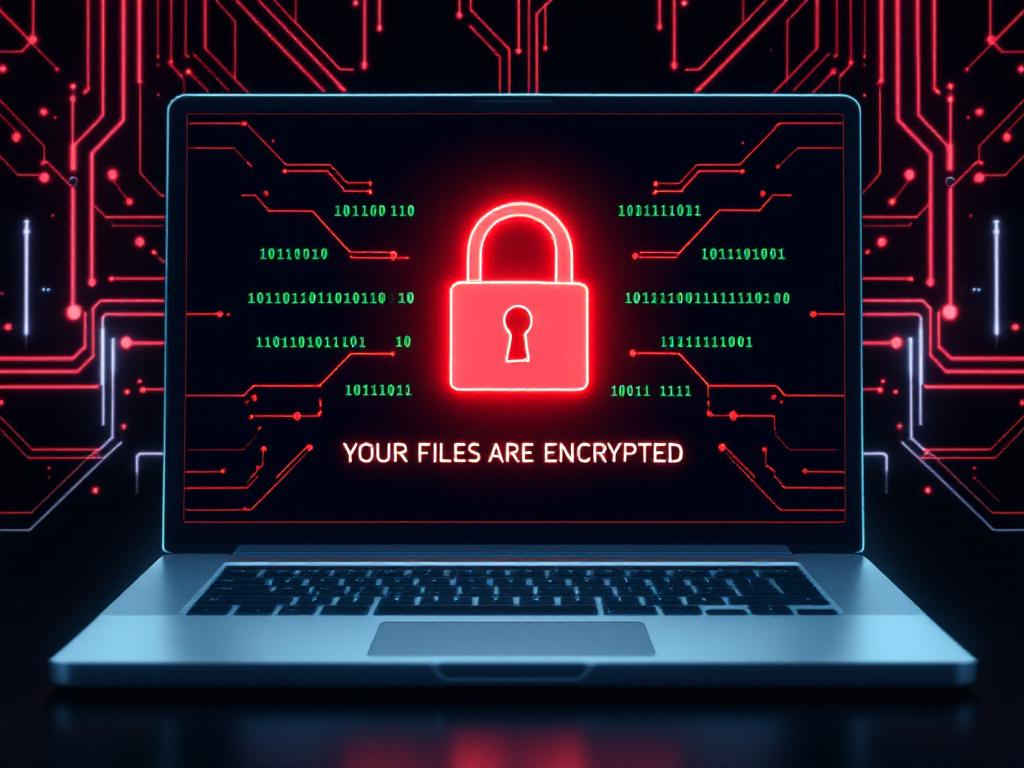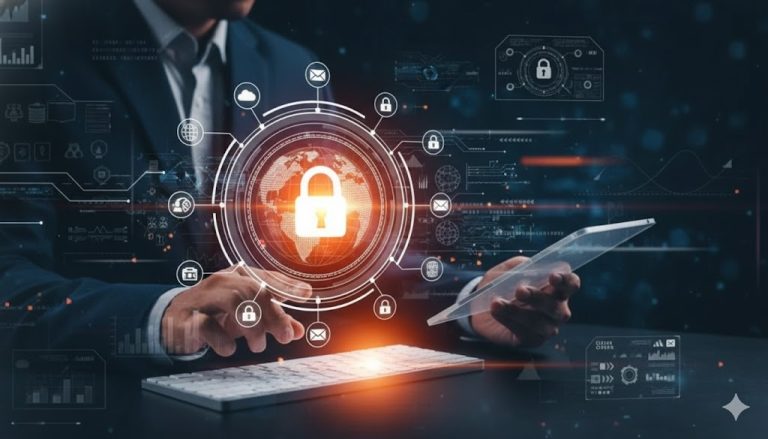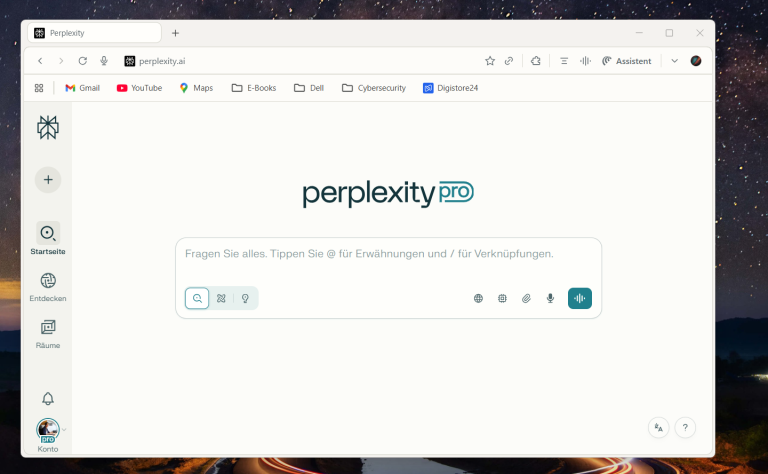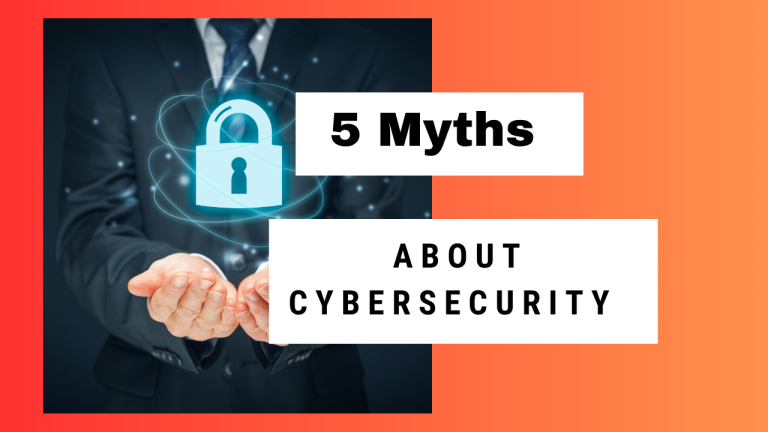In today’s business world, cybersecurity is no longer optional – it’s a survival skill. The number of digital threats continues to rise year after year, and 2025 shows no sign of slowing down. From ransomware gangs demanding millions to AI-powered phishing emails that look frighteningly real, the landscape has become more dangerous and more sophisticated.
Small and medium-sized businesses (SMBs), along with freelancers, are especially at risk. Why? They often don’t have the same budgets, IT departments, or security infrastructures as large corporations. Hackers know this – and deliberately target businesses that are “easy to crack.” The damage can be devastating: not just lost revenue, but stolen client data, reputational harm, and even legal consequences.
At the same time, companies are becoming increasingly dependent on cloud solutions, SaaS tools, and remote work setups. This shift brings flexibility and growth opportunities – but also expands the attack surface. One weak password, one compromised vendor, or one unpatched system can open the door to a full-scale breach.
The good news? Cybersecurity doesn’t have to be overwhelming. By understanding the top risks of 2025 and taking practical steps, business leaders and freelancers can significantly reduce their exposure. In this article, we’ll look at the biggest cybersecurity challenges you need to watch out for – and share simple, actionable ways to protect your business.
1. Ransomware Still Tops the List
Ransomware has been the number one cyber threat for several years, and in 2025 it’s more dangerous than ever. The concept is simple but devastating: cybercriminals break into your systems, encrypt your files, and then demand payment – often in cryptocurrency – to unlock them.
What’s changed is the scale and professionalism of these attacks. Today’s ransomware groups operate like full-blown businesses. They have support desks, negotiation teams, and even “affiliate programs” where other hackers can rent their malware. Some gangs now use a double-extortion model: they don’t just lock your data, they also threaten to leak sensitive information if you refuse to pay.
Why SMBs and freelancers are prime targets
Large corporations make headlines, but small businesses are often easier to hit. Freelancers and startups may think, “We’re too small to be interesting.” Unfortunately, that’s exactly what makes them attractive. Hackers know that smaller organizations usually:
- Lack a dedicated IT security team.
- Rely on basic antivirus or outdated systems.
- Can’t afford long downtimes – making them more likely to pay quickly.
For example, a design agency hit by ransomware could lose access to all client files overnight. A freelancer might find their laptop completely locked, with no way to deliver ongoing projects. In both cases, the financial and reputational damage can be crippling.
Protection tips – how to stay one step ahead
- Backups are your lifeline: Keep regular, automated backups on external drives or secure cloud storage. Test them often to make sure you can actually restore your files.
- Patch and update: Ransomware often exploits outdated software. Always install updates for operating systems, apps, and plugins.
- Email vigilance: Many attacks start with a single click on a malicious attachment. Train yourself (and your team) to spot unusual senders, fake invoices, or unexpected links.
- Limit access: Follow the principle of least privilege. If someone doesn’t need access to sensitive folders or databases, don’t grant it.
- Emergency plan: Prepare a simple action plan for what to do if ransomware hits – who to call, how to isolate affected devices, and how to restore from backups.
2. Smarter, AI-Powered Phishing
Phishing may sound old-fashioned, but in 2025 it’s more dangerous than ever. The basic idea hasn’t changed: attackers trick you into clicking a link, opening an attachment, or handing over sensitive information. What’s new is the sheer sophistication of these scams.
How phishing has evolved
In the past, phishing emails were often riddled with spelling errors and easy to spot. Not anymore. With the help of artificial intelligence, attackers now generate perfectly written messages in multiple languages. They mimic the tone, layout, and branding of real companies so well that even experienced professionals struggle to tell the difference.
And it doesn’t stop at emails. Phishing now happens through:
- SMS (Smishing): Fake delivery updates or banking alerts.
- Phone calls (Vishing): Criminals pretending to be IT support, accountants, or even government officials.
- Social media & collaboration tools: Fraudulent messages via LinkedIn, Slack, or Teams.
Imagine receiving a perfectly crafted email from what looks like your bank, warning you of suspicious activity. Or a WhatsApp message that appears to come from your business partner asking you to urgently review a document. These aren’t far-fetched scenarios anymore – they’re happening every day.
Why SMBs and freelancers are vulnerable
Freelancers and small business owners juggle dozens of emails, invoices, and notifications daily. In the rush of work, it only takes one careless click to compromise an entire system. Attackers know this and exploit the lack of strict internal processes that larger companies might have.
For instance:
- A small accounting firm could be tricked into wiring money to a “supplier.”
- A freelance consultant might unknowingly share client data via a fake login page.
- A marketing agency employee might download “project files” that actually contain malware.
Protection tips – how to fight back
- Enable MFA everywhere: Multi-factor authentication ensures that even if a password is stolen, criminals can’t log in without the second verification step.
- Verify before you trust: Always confirm unusual requests via a second channel (e.g., call the client directly).
- Train regularly: Short, engaging training sessions or phishing simulations keep awareness fresh.
- Use email filters: Modern email providers and security solutions can block many phishing attempts before they reach your inbox.
- Slow down: Hackers thrive on urgency. If a message demands “immediate action,” treat it with suspicion.
3. Supply Chain Attacks on the Rise
In 2025, one of the most underestimated risks for businesses and freelancers is the supply chain attack. Instead of breaking directly into your systems, cybercriminals target the software, tools, or service providers you rely on. Once those are compromised, attackers can piggyback their way into your business.
How supply chain attacks work
Think of your digital ecosystem: cloud platforms, SaaS tools, payment gateways, freelancers with remote access, even plugins on your website. Each one is a potential entry point. Hackers know it’s often easier to compromise a smaller vendor and then move up the chain.
Some real-world examples include:
- Software updates: Attackers inject malicious code into a legitimate update, which then spreads to all users.
- Third-party providers: A marketing tool or file-sharing service gets hacked, exposing your client data.
- Freelancer access: An external contractor’s laptop is infected, giving hackers a backdoor into your systems.
In short: you’re only as secure as your weakest link.
Why SMBs and freelancers are exposed
Big corporations invest heavily in vendor risk management. Smaller businesses, however, often choose tools and services based on price and convenience – not security standards. Freelancers may use plugins, apps, or file-sharing tools without realizing they could become a vulnerability.
For example:
- A web designer using a compromised WordPress plugin could unknowingly infect client websites.
- A small agency working with a hacked SaaS tool might leak sensitive customer data.
- A freelancer sharing documents through an unsecure platform could open the door to ransomware.
Protection tips – building a safer digital supply chain
- Choose trusted providers: Work with vendors that have clear security certifications (ISO 27001, SOC 2, GDPR compliance).
- Review contracts: Make sure service agreements include minimum security requirements.
- Limit external access: Give contractors and partners only the permissions they truly need – and remove them once a project is over.
- Audit regularly: Check which third-party tools are connected to your accounts. Remove those you no longer use.
- Stay updated: Subscribe to security updates from your main vendors, so you’re the first to know if they’ve been breached.
By 2025, the cloud has become the backbone of most businesses. Whether it’s Google Workspace, Microsoft 365, Dropbox, or industry-specific SaaS platforms – nearly every freelancer and company relies on cloud tools to store, share, and process data. Remote teams, hybrid work models, and digital collaboration wouldn’t function without it.
But here’s the catch: a single misconfiguration in the cloud can expose sensitive data to the entire internet. Attackers don’t even need to break in – they simply scan for open databases, unprotected storage buckets, or weak access controls.
How cloud vulnerabilities appear
- Misconfigured storage: Publicly accessible files in Google Drive, AWS S3, or OneDrive that were never meant to be public.
- Weak credentials: Reusing passwords or not enabling multi-factor authentication.
- Shadow IT: Employees using unapproved tools without the knowledge of IT or management.
- Insider threats: Ex-employees or contractors still having access to cloud systems.
These gaps can lead to data leaks, compliance violations, or even full-blown ransomware incidents.
Why SMBs and freelancers are at risk
Large enterprises usually have cloud architects and security engineers. Smaller businesses often don’t – which means configuration is handled by whoever set up the tool. Freelancers might juggle multiple cloud accounts without realizing they’re exposing client files.
For example:
- A freelance copywriter shares a draft via Google Drive but forgets to restrict access. Suddenly, anyone with the link can view confidential content.
- A small design agency uses Dropbox but doesn’t remove permissions for past interns – leaving client data accessible long after they’ve left.
- An SMB migrates to Microsoft 365 but skips advanced security settings, creating easy openings for attackers.
Protection tips – securing your cloud the smart way
- Enable MFA for all cloud accounts: It’s the single most effective protection against unauthorized access.
- Review permissions regularly: Who has access to what? Remove old users, contractors, or tools that no longer need it.
- Encrypt sensitive files: Even if data is stolen, encryption makes it useless without the key.
- Choose providers wisely: Stick to established platforms with strong compliance standards (e.g., GDPR, ISO certifications).
- Audit and monitor: Use built-in security dashboards (Google Admin, Microsoft Security Center, etc.) to check for unusual activity.
Cloud services are incredibly powerful, but they’re not “set and forget.” A little ongoing attention makes the difference between convenience and catastrophe.
Artificial Intelligence is revolutionizing business — but it’s also transforming cybercrime. In 2025, attackers use AI to launch smarter, faster, and more convincing attacks than ever before. What used to require a team of hackers can now be done automatically by AI-powered tools.
How attackers use AI
- Deepfake scams: Fraudsters create realistic voice or video messages that mimic CEOs, managers, or clients. Employees may receive a call “from the boss” asking them to urgently transfer funds or share credentials.
- AI-generated phishing: Instead of generic spam, AI can craft personalized emails using public data (like LinkedIn profiles), making them harder to detect.
- Malware automation: AI helps attackers test, adapt, and improve malicious code — quickly finding ways around antivirus or firewalls.
- Credential stuffing at scale: AI-driven bots can attempt millions of stolen username/password combinations in seconds.
Why SMBs and freelancers should be concerned
Smaller businesses may think these tactics only target large corporations. But AI makes it cheap and scalable — meaning everyone is a target.
Imagine:
- A freelancer gets a deepfake voicemail that sounds exactly like their biggest client, asking to “urgently” share a draft via a link. That link installs malware.
- A small accounting firm receives an AI-written phishing email, complete with perfect grammar and their actual bank’s branding.
- An online store faces nonstop credential-stuffing attacks, locking out customers and creating chaos.
Protection tips – fighting AI with AI
- Use AI-powered security tools: Many modern solutions (antivirus, firewalls, email filters) now use machine learning to detect unusual patterns and block threats faster.
- Strengthen identity verification: Always confirm unusual requests through a second channel (phone call, video chat, in-person confirmation).
- Adopt zero-trust principles: Don’t automatically trust internal or external communication — verify every access attempt.
- Update policies: Train employees and freelancers to recognize that voice, video, and text can all be faked. Awareness is your first line of defense.
- Regular system updates: Even AI-driven attacks often rely on unpatched vulnerabilities. Keeping software current is still one of the most effective shields.
AI-driven threats are no longer science fiction — they’re today’s reality. The line between real and fake communication is blurring fast, and businesses that rely only on “gut feeling” are at risk. By combining smart tools, strict processes, and a healthy dose of skepticism, companies and freelancers can defend themselves against the next generation of cyberattacks.
Conclusion: How to Protect Your Business from Ransomware in 2025
Ransomware remains one of the most dangerous threats in 2025 — but it doesn’t have to cripple your business. The key to protection is preparation. Regular backups, strong password policies, multi-factor authentication, and strict access controls dramatically reduce the chances of falling victim. Just as important is awareness: every employee, contractor, or freelancer in your network needs to recognize suspicious emails, unexpected attachments, or urgent requests that don’t feel right.
Cybercriminals are getting smarter, but so can you. By treating cybersecurity as a core part of your business strategy, you not only safeguard your data — you also protect your reputation and client trust.
👉 The bottom line: Staying proactive, training your team, and investing in modern security tools is the most effective answer to the question “How to protect your business from ransomware in 2025.”
Remember, in a digitally connected world where cyber threats are constantly evolving, it is invaluable to be proactive. Stay up to date on security trends and technologies, and don’t hesitate to seek expert advice if you need assistance. Your efforts to secure your website are an investment in the future of your online business.
This might also be interesting:
Cyberattack Emergency Plan – What to Do When It Happens
Exposing phishing emails: How to recognize fraud attempts – safely and systematically
Is Windows Defender 2025 still the best protection?
Follow me on Facebook or Tumblr to stay up to date.
Connect with me on LinkedIn
Take a look at my services
And for even more valuable tips, sign up for my newsletter





